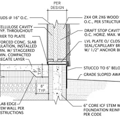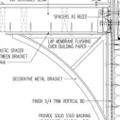Improving Indoor Air Quality
My home appears to have air quality issues and I’m seeking advice on possible solutions to the problem. I got an Awair element about a month ago and noticed that pm2.5 spikes pretty dramatically overnight. I’m most curious about permanent solutions this problem. Research has led to me to think that something like an ERV could help by constantly cycling outdoor and indoor air.
– the home was built around 1905
– previously a duplex, converted to a SFH
– it was redone in the early 2010s
– is a single floor
– has thick exterior stone solid wall construction
– a low slope roof and high-ceilings
– a low basement housing an 80% efficiency furnace; installed during the remodel. This basement is partially dirt with radon mitigation tarping; partially poured concrete for retaining walls and the floor.
I’m curious about what my best options might be and also what the cause of these indoor air pollution spikes could be. I’ve had the ductwork checked (it all looks fine); I vacuum every few days and have solid wood floors; and I regularly air the house out.
I’m tempted to think that my house is relatively porous and that outdoor air pollution is making its way into the house and stagnating; or possibly just pooling in the house.
We’ve performed a blower test and scored 6.37 ACH50. I’m in climate zone 5b (Denver).
Apologies if this is a bit of a brain dump, I’m happy to give more detail if it could help.
Thanks!
GBA Detail Library
A collection of one thousand construction details organized by climate and house part









Replies
Some studies show that PM2.5 peaks during nighttime hours: https://www.ncbi.nlm.nih.gov/pmc/articles/PMC4626967/ That study suggests atmospheric conditions.
As nighttime temperatures tend to be lower, various things may coalesce (e.g., aided by moisture).
Here's another article, from Nature: https://www.nature.com/articles/s41598-020-70179-8 That study also found elevated PM2.5 at night: "A peculiar enhancement in PM2.5 levels in the early morning and in the night time, even during lockdown, has also been examined."
"This implies that local meteorology and boundary layer dynamics control the diurnal variation of PM2.5. It is worth noticing that during the early morning and late night, wind speed is very low (< 1 m s−1) and temperature remains around 20 °C or less, which are favorable conditions for non-dispersion of pollutants. These low temperature and stagnation of wind movement in the absence of solar radiation also contribute to the formation of haze (unactivated particles consisting both of liquid water and other compounds by hygroscopic growth) and possibly mist (activated larger particles mainly consisting of liquid water)."
Perhaps you can set the device outside and see what happens. If it's an outdoor air issue, then tightening up your house may make a difference, with a 6+ ACH50, you should have some opportunities to reduce outdoor air coming in at night.
There are people who would advise you to tighten up your house with some strategic air-sealing before investing in an ERV in order to optimize its capacity to improve your air quality. Given the age of your home, I was reminded of this article, which you might find useful or at least thought-provoking: Adding Mechanical Ventilation to Old Houses.
your home’s got some history and charm with that 1905 vibe, but I get how that comes with its own bag of tricks, air quality being a biggie. 😮 so, pm2.5 shooting up at night, huh? that's a head-scratcher but you're on the right track thinking an ERV could help out. it's like giving your house a set of lungs, constantly breathing in fresh air and pushing out the stale stuff. 👍since your place was a duplex before and now it’s a single-family home (SFH), that's a lot of space and old structure to consider. redo in the early 2010s should’ve sorted some issues but maybe not all. single floor with high ceilings and a low slope roof means air can move around differently than in multi-story buildings. now, your thick stone walls are great for insulation but not so much for breathability, so there’s that. with the basement situation, that radon mitigation is key, glad you’ve got that covered! 👌 the furnace being 80% efficiency is decent but upgrading it could be something to think about down the line for even better air management. ductwork looking fine is good news. and hey, props for the regular cleaning and airing out – solid wood floors help a lot with keeping the dust down too. about the porous theory – yeah, it’s possible. those pm2.5 particles are sneaky little things and if they find a way in, they’ll hang around. your blower test score tells us your home’s got some leakiness to it, which isn’t shocking for its age. for your climate zone in Denver, you’ve got to balance keeping warm and keeping the air fresh. an ERV's great 'cause it does the juggling act for you, using the outgoing air to warm up the fresh air coming in. pretty neat, right? 🌬 so what to do? an ERV’s a solid move, and maybe also look into sealing up any obvious leaks that the blower test pointed out. you could add some air purifying plants as a natural touch. 🌿 and maybe consider an upgrade on that furnace if budget allows. still, the spikes in pm2.5 are odd. sometimes it’s stuff like outdoor air quality affecting your indoor numbers or even something as simple as your nightly routine stirring up particles. ever check what’s happening around your neighborhood at night? hope this helps! and no worries on the brain dump, it’s good to get all the info out there. 😄👍
You don't mention how many bedrooms there are, but assuming you don't leave windows open most nights, my guess would be that an air purifier located in each bedroom could do a pretty good job of mitigating the PM2.5 at nighttime, at least in terms of the air you're actually breathing at night. I would try starting there since the cost is much lower and you'll probably need some kind of air filtration anyway even if you do end up adding an ERV.
Agree with tim_st - the first solution here is to try an air purifier. We have one (Conway Airmega 200M) running on an "auto" setting 24/7. That along with running the air handler fan for 15 min per hour keeps our PM2.5 below 2.5 ug/m3 on our Awair. This is for almost 1700 sf of conditioned square footage.
Merv 14 Filtrete fIlter (2800 series).
I have a University of Utah air monitor on the exterior of my house. On a few occasions when SLC is having horrible PM2.5 where Utah has the worst air in the world, I brought it in and my interior was below reliable reading on the gauge.
Now use the Filtrete 2800 series exclusively. Early death to the Furnace is accepted.
Ozone is a gas and I have no solution when Utah's ozone is horrible. Sigh.